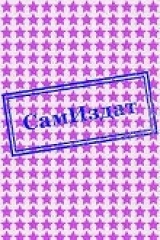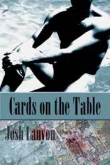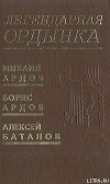
Текст книги "Port Arthur town of Knights of Round Table (СИ)"
Автор книги: Инна Тигги
Жанр:
Биология
сообщить о нарушении
Текущая страница: 4 (всего у книги 4 страниц)
2017, США – Является одним из ключевых героев фильма "Трансформеры: Последний рыцарь". Его роль сыграл Стэнли Туччи, который удосужился, уже, сыграть в приквеле "Трансформеры: Эпоха истребления" роль Джошуа Джойса.
Herbert Algernon. Britania after the Romans. London.1886.vol 2. p 17
The Chronicle of the Early Britons.Brut y Bryttaniait according to Jesus College MS LXI an annotated translation by Wm R Cooper MA, PhD, ThD.Ashford,Middlesex.2002
Ystoria Taliesin
Herbert Algernon. Britania after the Romans. London.1886.vol 2. p 3
http://www.maryjones.us/ctexts/englynion98b.html Englynnion Y Bedeu Peniarth 98B Перевод 14 строфы Mary Johnes
Дмитриева О. Белый дракон над Англией // Знание-Сила. – М., 1997. – ╧ 11.
Написание Мирддин Виллт – согласно журналу Вокруг Света, ╧ 6 (2825), июнь 2009 (Проверено 1 июня 2009)
Новеллино (Il novellino). Издание подготовили М. Л. Андреев, И. А. Соколова. Серия "Литературные памятники". – М., Наука, 1984. "
(from Wikipedia)
*************************
**********************************************
И, я сюда добавлю версию и гипотезу , связывающую древний город Мерв в Туркменистане и имя Мерлин
город Мерв в Туркменистане – и имя Волшебник Мерлин,
Мерв – Мерлин
Мерлин, как «с города Мерв с Туркменистана»
Турк, Тур, Туркменистан, Турция, турки, тур, – – и Артур
Волшебники и рыцари часто в путешествиях и передрягах,
рыцари турниры проводят.
Волшебника вполне могло занести в Туркменистан город Мерв,
и он мог взять имя в память города Мерв как Мерлин.
Но это чисто фантазийная версия и гипотеза. Может быть и правдой и полным вымыслом.
Кстати, мы знаем версии о путешествии Иисуса Христа в Индию (как версия).
Но и город Мерв аккамулировал палитру религий в определённые этапы, а также и студентов.
********
On English
«Merlin»
https://en.wikipedia.org/wiki/Merlin
" Merlin
(Welsh: Myrddin) is a legendary figure best known as the wizard featured in Arthurian legend and medieval Welsh poetry.
The standard depiction of the character first appears in
Geoffrey of Monmouth's
Historia Regum Britanniae, written c. 1136,
and is based on an amalgamation of previous historical and legendary figures.
Geoffrey combined existing stories of
Myrddin Wyllt (Merlinus Caledonensis),
a North Brythonic prophet and madman with no connection to King Arthur,
with tales of the Romano-British war leader
Ambrosius Aurelianus
to form the composite figure he called
Merlin Ambrosius (Welsh: Myrddin Emrys)."
(from Wikipedia)
***************************************************
«Matter of Britain»
https://en.wikipedia.org/wiki/Matter_of_Britain
«The Matter of Britain is the body of Medieval literature and legendary material associated with Great Britain, and sometimes Brittany, and the legendary kings and heroes associated with it, particularly King Arthur. It was one of the three great story cycles recalled repeatedly in medieval literature, together with the Matter of France, which concerned the legends of Charlemagne, and the Matter of Rome, which included material derived from or inspired by classical mythology.»
(from Wikipedia)
**************************************
"King Arthur"
https://en.wikipedia.org/wiki/King_Arthur
King Arthur
"King Arthur
is a legendary British leader who,
according to medieval histories and romances,
led the defence of Britain
against Saxon invaders
in the late 5th and early 6th centuries.
The details of Arthur's story are mainly composed of folklore and literary invention, and his historical existence is debated and disputed by modern historians.
The sparse historical background of Arthur is gleaned from various sources, including the
Annales Cambriae, the Historia Brittonum, and
the writings of Gildas.
Arthur's name also occurs in early poetic sources such as Y Gododdin.
Arthur is a central figure in the legends making up
the Matter of Britain.
The legendary Arthur
developed as a figure of international interest largely through the popularity of
Geoffrey of Monmouth's fanciful and imaginative
12th-century
Historia Regum Britanniae (History of the Kings of Britain).
In some Welsh and Breton tales and poems
that date from before this work,
Arthur
appears either as a great warrior defending Britain
from human and supernatural enemies or as a magical figure of folklore,
sometimes associated with
the Welsh Otherworld, Annwn.
How much of
Geoffrey's
Historia
(completed in 1138)
was adapted from such earlier sources,
rather than invented by Geoffrey himself,
is unknown.
Although the themes, events and characters of the Arthurian legend varied widely from text to text, and there is no one canonical version;
Geoffrey's version of events often served as the starting point for later stories.
Geoffrey depicted
Arthur as a king of Britain who defeated the Saxons and established an empire over
Britain, Ireland, Iceland, Norway and Gaul.
Many elements and incidents
that are now an integral part of
the Arthurian story appear
in Geoffrey's Historia, including
Arthur's father
Uther Pendragon,
the wizard Merlin,
Arthur's wife Guinevere,
the sword Excalibur,
Arthur's conception at Tintagel,
his final battle against Mordred at Camlann,
and final rest in Avalon.
The 12th-century
French writer
Chretien de Troyes,
who added
Lancelot and
the Holy Grail to the story,
began the genre of Arthurian romance that became a significant strand of medieval literature.
In these French stories, the narrative focus often shifts from King Arthur himself
to other characters, such as various
Knights of the Round Table.
Arthurian literature thrived during the Middle Ages but waned in the centuries that followed until it experienced a major resurgence in the 19th century.
In the 21st century, the legend lives on, not only in literature but also in adaptations for theatre, film, television, comics and other media."
"The historical basis for the King Arthur legend has long been debated by scholars. One school of thought, citing entries in the Historia Brittonum (History of the Britons) and Annales Cambriae (Welsh Annals), sees Arthur as a genuine historical figure, a Romano-British leader who fought against the invading Anglo-Saxons some time in the late 5th to early 6th century.
The Historia Brittonum,
a 9th-century Latin historical compilation attributed in some late manuscripts to a Welsh cleric called
Nennius,
contains the first datable mention of King Arthur,
listing twelve battles that Arthur fought. These culminate in
the Battle of Badon, where he is said to have single-handedly killed 960 men. "
(from Wikipedia)
"The other text that seems to support the case for Arthur's historical existence is the 10th-century Annales Cambriae, which also link
Arthur with
the Battle of Badon.
The Annales date this battle to 516-518, and also mention
the Battle of Camlann, in which
Arthur and Medraut (Mordred)
were both killed,
dated to 537-539.
These details have often been used to bolster confidence in the Historia's account and to confirm that Arthur really did fight at Badon.
Problems have been identified, however, with using this source to support the Historia Brittonum's account.
The latest research shows that the Annales Cambriae was based on a chronicle begun in the late 8th century in Wales.
Additionally, the complex textual history of the Annales Cambriae precludes any certainty that the Arthurian annals were added to it even that early.
They were more likely added at some point
in the 10th century and may never have existed in any earlier set of annals.
The Badon entry probably derived from the Historia Brittonum."
[no evidences of the real existing by historical studies results]
(from Wikipedia)
...
"An alternative theory, which has gained only limited acceptance among professional scholars, derives the name
Arthur
from
Arcturus,
the brightest star in the constellation Boötes,
near Ursa Major or the Great Bear.
Classical Latin
Arcturus
would also have become Art(h)ur when borrowed into Welsh, and
its brightness and position in the sky led people to regard it as
the "guardian of the bear"
(which is the meaning of the name in Ancient Greek) and
the "leader" of the other stars in Booötes (Bootes).
A similar first name is Old Irish
Artur,
which is believed to be derived directly from an early Old Welsh or Cumbric Artur.
The earliest historically attested bearer of the name is a son or grandson of Aedan mac Gabrain (d. 609)"
(from Wikipedia)
Resource:
https://en.wikipedia.org/wiki/King_Arthur
***
"Arthur stone"
"Artognou stone"
https://en.wikipedia.org/wiki/Artognou_stone
«Arthur stone»
"Artognou stone"
«Artognou stone»
"The Artognou stone, sometimes referred to as
the Arthur stone,
is an archaeological artefact uncovered
in Cornwall in the United Kingdom.
It was discovered in 1998 in securely dated
sixth-century
contexts
among the ruins
at
Tintagel Castle in Cornwall,
a secular, high status settlement of sub-Roman Britain.
It appears to have originally been a practice dedication stone for some building or other public structure, but it was broken in two and re-used as part of a drain when the original structure was destroyed. Upon its discovery the stone achieved some notoriety due to the suggestion that «Artognou» was connected to the legendary King Arthur,
though scholars such as John Koch have criticized the evidence for this connection."
"At the top right-hand corner of the fragment is a deeply cut motif consisting (as visible) of
a letter
A
and another incomplete character on either side of a large diagonal cross;
the whole may represent a common Christian symbol,
a Christogram-the Greek alphabet letters Alpha and Omega flanking a large Greek letter Chi (written like a Roman X),
the initial of
Christos (Christ).
Below this and to the left, but overlapping it slightly, is a smaller, more lightly incised inscription in Latin, reading:
PATERN[–] COLI AVI FICIT ARTOGNOU .
This seems to have been repeated lower down and to the right; only the letters COL[.] and FICIT, on two lines, can be seen on the fragment. This repetition, the overlap with the Christogram and the shallow carving (scratching would be a more accurate description) all suggest that this was not a formal inscription but an example of graffiti.
The inscription has been translated by the Celtic Inscribed Stones Project as
«Artognou descendant of Patern[us] Colus made (this). Colus made (this).»
The name
Artognou
means "Bear Knowing",
from the Brittonic root *arto "bear" plus *gnāwo– "to know",
and is cognate with
the Old Breton name
Arthnou
and Welsh name
Arthneu.
Also found
in the sixth-century fort
at Tintagel
were
numerous remains of expensive pottery, glasswork, and
coins from Visigothic Spain and
the Byzantine Empire
(when excavated in the 1930s
by C. A. Ralegh Radford).
It would have had to be a powerful state to have sustained trade with the Mediterranean."
(from Wikipedia)
«Recent studies, however, question the reliability of the Historia Brittonum.»
(from Wikipedia)
****
To summarize.
Any knowledge is the process of time to pass to add facts, events, resources of facts.
While so,
Port Arthur town in China may be connected to King Arthur name and legends or links
and town Merv in Turkemistan, Turkmenia to Wizard Mellin legends.
But this connections is a fantazies. No evedences for me to know them.
Regards,
Inna
Tiggi
Eanna Inna Balzina-Balzin
Ианна Инна Бальзина-Бальзин
«Port Arthur town of Knights of Round Table»,
the small article of fantazies and copy past information from Wikipedia.
http://www.proza.ru/2018/06/17/1390








